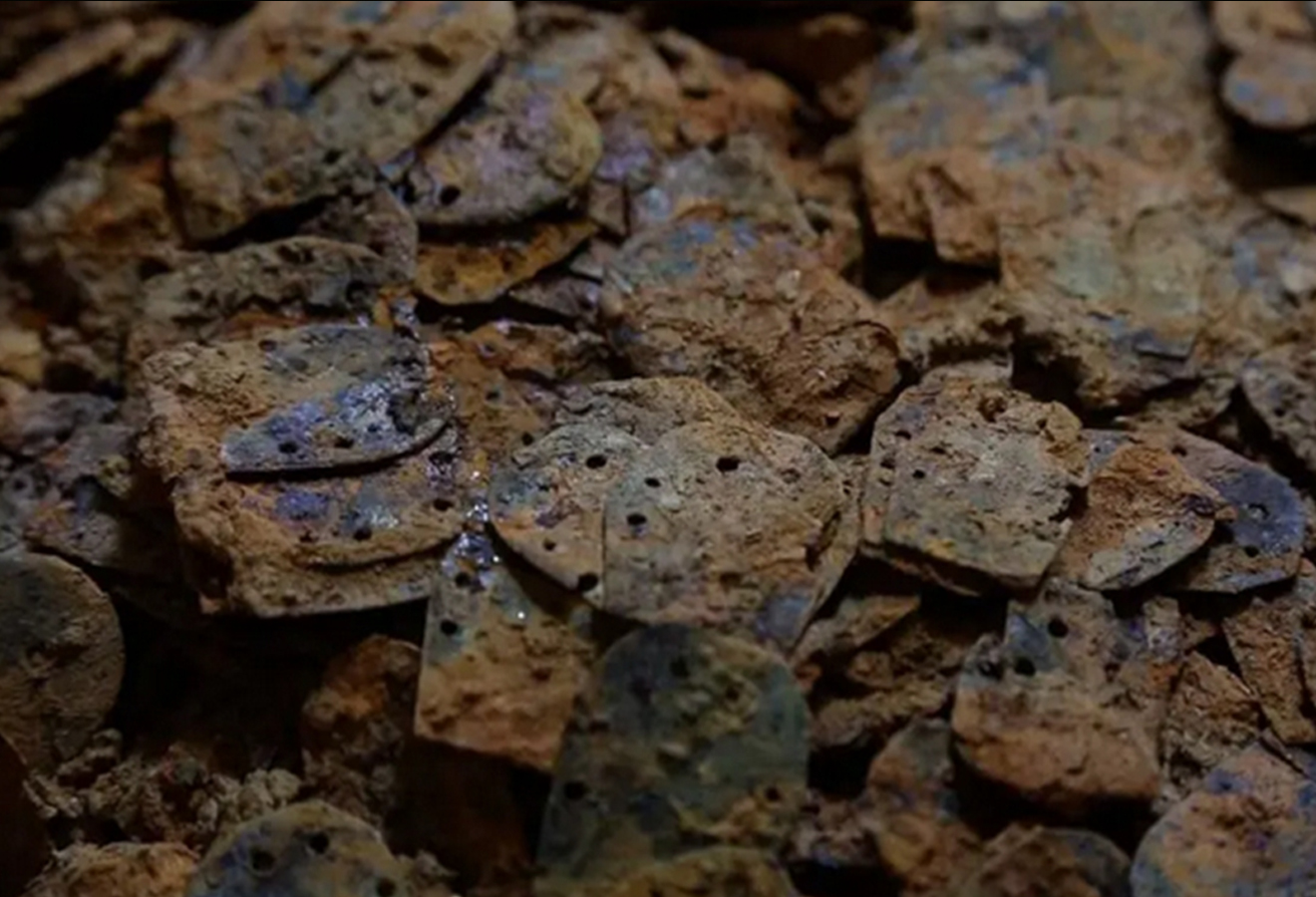Archaeologists have found more than 6,000 pieces of fish scale-armour during excavations of the tomb of Emperor Liu He, located in Nanchang, Jiangxi province, China.
Liu He was the grandson of Emperor Wu of Han and son of the King of Changyi. He became the ruler of Changyi at just four years old, and in 74 BC he ascended to the imperial throne after being appointed by the minister Huo Guang.
Just 27 days after his ascension, he was deposed and excluded from the official list of emperors, with palace officials citing 1,127 instances of misconduct as grounds for impeachment.
Liu He was exiled to live as a commoner and passed away in 59 BC. He was laid to rest in the Tomb of the Marquis of Haihun, which was discovered by archaeologists in 2011.
His tomb is among the best preserved of the Western Han Dynasty, featuring the largest collection of relics from the era. It is renowned for its remarkable variety and exceptional craftsmanship, making it a standout discovery in Jiangxi.
Recent excavations have found more than 6,000 pieces of fish-scale armour composed of lacquered iron, copper, and leather. According to archaeologists, the discovery is the first example of multi-material armour dating from the Han Dynasty, as previous examples were made of a single type of material.
The fish-scale armour was discovered in an armoury room in the west part of the outer chamber of the tomb among a pile of swords.
Bai Rongjin, a research fellow with the Institute of Archaeology, Chinese Academy of Social Sciences, said that “the smallest armour piece was only 1 centimetre wide and 0.2 centimetres thick. The presence of smaller armour pieces indicates that more armour pieces were needed to make the armour, and that the forging process was a more refined one.”
Header Image Credit : Institute of Archaeology, Chinese Academy of Social Sciences
Sources : Institute of Archaeology, Chinese Academy of Social Sciences





